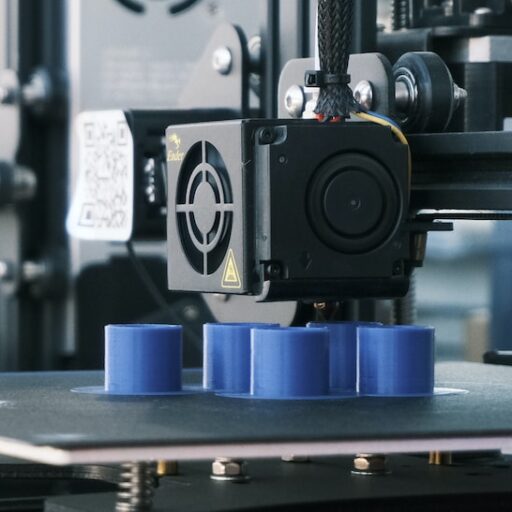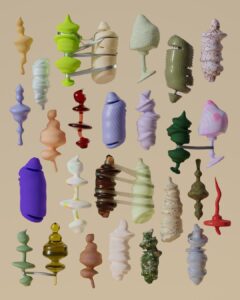Support our educational content for free when you purchase through links on our site. Learn more
What Can I Make with a 3D Printer to Sell in 2023?
[2023] Are you looking to turn your 3D printing hobby into a profitable venture? Wondering what you can make with a 3D printer to sell? Look no further! Our team at 3D Printed™ has compiled a comprehensive guide to help you explore the possibilities and find success in the world of 3D printing. From practical items to artistic creations, we’ve got you covered. So, let’s dive in and discover the exciting opportunities that await you!
Table of Contents
- Quick Answer
- Quick Tips and Facts
- Legal Information
- Home Decor and Accessories
- Fashion and Jewelry
- Toys and Games
- Gadgets and Gizmos
- Customized Products
- FAQ
- Conclusion
- Recommended Links
- Reference Links
Quick Answer
Looking to make money with your 3D printer? Here are some popular items you can create and sell:
- Home decor and accessories
- Fashion and jewelry
- Toys and games
- Gadgets and gizmos
- Customized products
With a bit of creativity and marketing know-how, you can turn your 3D printing skills into a profitable business venture. Let’s explore each category in more detail.
Quick Tips and Facts
Before we dive into the various categories, here are some quick tips and facts to keep in mind:
- Quality matters: Ensure that your 3D prints are of high quality and finish. Customers are willing to pay more for well-made products.
- Choose the right materials: Select the appropriate materials for each item you create. Consider factors such as durability, flexibility, and aesthetics.
- Market research is key: Research the market to identify popular trends and niches. This will help you create products that have a higher chance of selling.
- Consider scalability: Think about the scalability of your chosen products. Can you produce them in large quantities if demand increases?
- Pricing strategy: Set competitive prices for your products. Consider factors such as material costs, printing time, and market demand.
Now that we have covered the basics, let’s explore each category in more detail.
Legal Information
Before you start selling 3D-printed items, it’s important to understand the legal aspects involved. Here are some key points to consider:
- Intellectual property: Respect intellectual property rights and avoid infringing on copyrights, trademarks, or patents. Design your own unique creations or obtain proper licenses for existing designs.
- Licensing agreements: If you plan to sell products based on licensed characters or brands, ensure that you have the necessary permissions and agreements in place.
- Product liability: Be aware of any potential product liability issues. Ensure that your products are safe and comply with relevant safety standards.
- Local regulations: Familiarize yourself with local regulations regarding the sale of 3D-printed items. Some countries may have specific requirements or restrictions.
It’s always a good idea to consult with a legal professional to ensure that you are operating within the bounds of the law.
Home Decor and Accessories
Home decor and accessories are always in demand. With a 3D printer, you can create unique and personalized items that customers will love. Here are some ideas to get you started:
- Planters and vases: Design and print stylish planters and vases to add a touch of greenery to any space.
- Candle holders: Create intricate candle holders that can serve as beautiful centerpieces or decorative accents.
- Wall art: Design and print unique wall art pieces, such as geometric sculptures or customizable name signs.
- Kitchen accessories: Print functional and stylish kitchen accessories like utensil holders, spice racks, or custom cookie cutters.
- Storage solutions: Create innovative storage solutions like wall-mounted organizers or desk organizers.
Check price on: Thingiverse | Cults3D | Yeggi | Free3D | MyMiniFactory | Pinshape | CGTrader | TurboSquid | 3Dexport
Fashion and Jewelry
3D printing opens up a world of possibilities in the realm of fashion and jewelry. Create unique, customizable pieces that will make a statement. Here are some ideas:
- Earrings and necklaces: Design and print intricate earrings and necklaces that showcase your creativity.
- Bracelets and bangles: Create stylish bracelets and bangles that can be customized with different patterns or text.
- Brooches and pins: Print eye-catching brooches and pins that can add a touch of personality to any outfit.
- Hair accessories: Design and print hair clips, barrettes, or headbands that are both fashionable and functional.
- Fashion accessories: Create unique fashion accessories like belt buckles, cufflinks, or tie clips.
Check price on: Thingiverse | Cults3D | Yeggi | Free3D | MyMiniFactory | Pinshape | CGTrader | TurboSquid | 3Dexport
Toys and Games
The toy and game industry is a lucrative market, and 3D printing allows you to create unique and customizable toys and games. Here are some ideas to spark your imagination:
- Puzzles: Design and print intricate puzzles that challenge and entertain both kids and adults.
- Educational toys: Create educational toys that promote learning and development, such as building blocks or science kits.
- Figurines: Print collectible figurines inspired by popular characters or create your own unique designs.
- Board games: Design and print custom board games with unique themes and gameplay mechanics.
- Miniatures: Create detailed miniatures for tabletop games like Dungeons & Dragons or Warhammer.
Check price on: Thingiverse | Cults3D | Yeggi | Free3D | MyMiniFactory | Pinshape | CGTrader | TurboSquid | 3Dexport
Gadgets and Gizmos
Gadgets and gizmos are always popular, and 3D printing allows you to create unique and functional items. Here are some ideas to get you started:
- Phone accessories: Design and print phone cases, stands, or holders that are both stylish and practical.
- Cable management: Create cable organizers or holders to keep your workspace tidy and organized.
- Keychains: Print personalized keychains that can be customized with names, initials, or designs.
- Camera accessories: Design and print camera lens caps, tripod mounts, or custom camera grips.
- Home automation: Create custom enclosures or mounts for home automation devices like Raspberry Pi or Arduino.
Check price on: Thingiverse | Cults3D | Yeggi | Free3D | MyMiniFactory | Pinshape | CGTrader | TurboSquid | 3Dexport
Customized Products
One of the biggest advantages of 3D printing is the ability to create customized products. Here are some ideas that allow you to tap into the personalized market:
- Customized phone cases: Design and print phone cases that can be customized with names, initials, or unique designs.
- Personalized gifts: Create personalized gifts like keychains, photo frames, or custom figurines.
- Customized jewelry: Print jewelry pieces that can be customized with initials, birthstones, or unique patterns.
- Customized home decor: Design and print home decor items that can be personalized with names, quotes, or special dates.
- Customized accessories: Create accessories like wallets, bags, or watch bands that can be customized with unique designs.
Check price on: Thingiverse | Cults3D | Yeggi | Free3D | MyMiniFactory | Pinshape | CGTrader | TurboSquid | 3Dexport
FAQ

What can I print with a 3D printer to make money?
With a 3D printer, you can print a wide range of items to make money. Some popular options include:
- Home decor and accessories
- Fashion and jewelry
- Toys and games
- Gadgets and gizmos
- Customized products
The key is to find a niche or create unique designs that cater to a specific market demand.
Read more about “What Can I 3D Print to Make Money in 2023? …”
Is selling 3D-printed items profitable?
Selling 3D-printed items can be profitable, but success depends on various factors such as market demand, pricing, and quality. Conduct thorough market research, create high-quality products, and set competitive prices to increase your chances of profitability.
Read more about “… 3D Printed Products in Demand: The Ultimate Guide”
What to 3D model to sell?
When deciding what to 3D model to sell, consider the following:
- Identify popular trends and niches in the market.
- Focus on creating unique and customizable designs.
- Research customer preferences and demands.
- Consider the scalability of your chosen products.
By combining these factors, you can create 3D models that have a higher chance of selling.
Read more about “… 33 Genius 3D Printing Ideas: Unleash Your Creativity!”
Conclusion
In conclusion, a 3D printer opens up a world of possibilities for creating and selling unique products. Whether you choose to focus on home decor, fashion, toys, gadgets, or customized items, there is a market waiting for your creations. Remember to prioritize quality, conduct market research, and stay up-to-date with the latest trends. With dedication and creativity, you can turn your 3D printing hobby into a profitable business venture.
Now it’s time to unleash your creativity and start printing! For more inspiration, check out our related article: 33 Genius 3D Printing Ideas: Unleash Your Creativity!
Recommended Links
- Shop Home Decor and Accessories on: Thingiverse | Cults3D | Yeggi | Free3D | MyMiniFactory | Pinshape | CGTrader | TurboSquid | 3Dexport
- Shop Fashion and Jewelry on: Thingiverse | Cults3D | Yeggi | Free3D | MyMiniFactory | Pinshape | CGTrader | TurboSquid | 3Dexport
- Shop Toys and Games on: Thingiverse | Cults3D | Yeggi | Free3D | MyMiniFactory | Pinshape | CGTrader | TurboSquid | 3Dexport
- Shop Gadgets and Gizmos on: Thingiverse | Cults3D | Yeggi | Free3D | MyMiniFactory | Pinshape | CGTrader | TurboSquid | 3Dexport
- Shop Customized Products on: Thingiverse | Cults3D | Yeggi | Free3D | MyMiniFactory | Pinshape | CGTrader | TurboSquid | 3Dexport
For more articles and resources on 3D printing, visit the 3D Printed™ website.
Reference Links
- Intellectual Property Basics
- Product Liability
- Local Regulations for 3D Printing
- Raspberry Pi
- Arduino
Remember to always consult with legal professionals and refer to official sources for accurate and up-to-date information.





